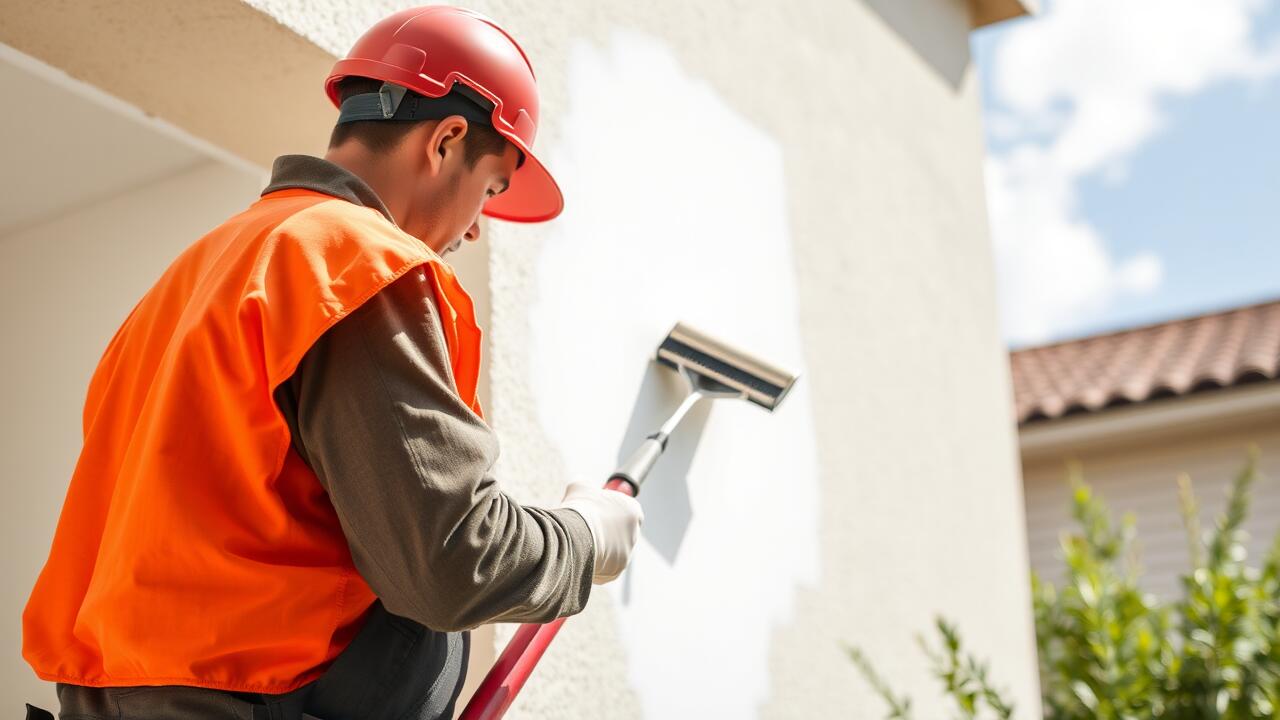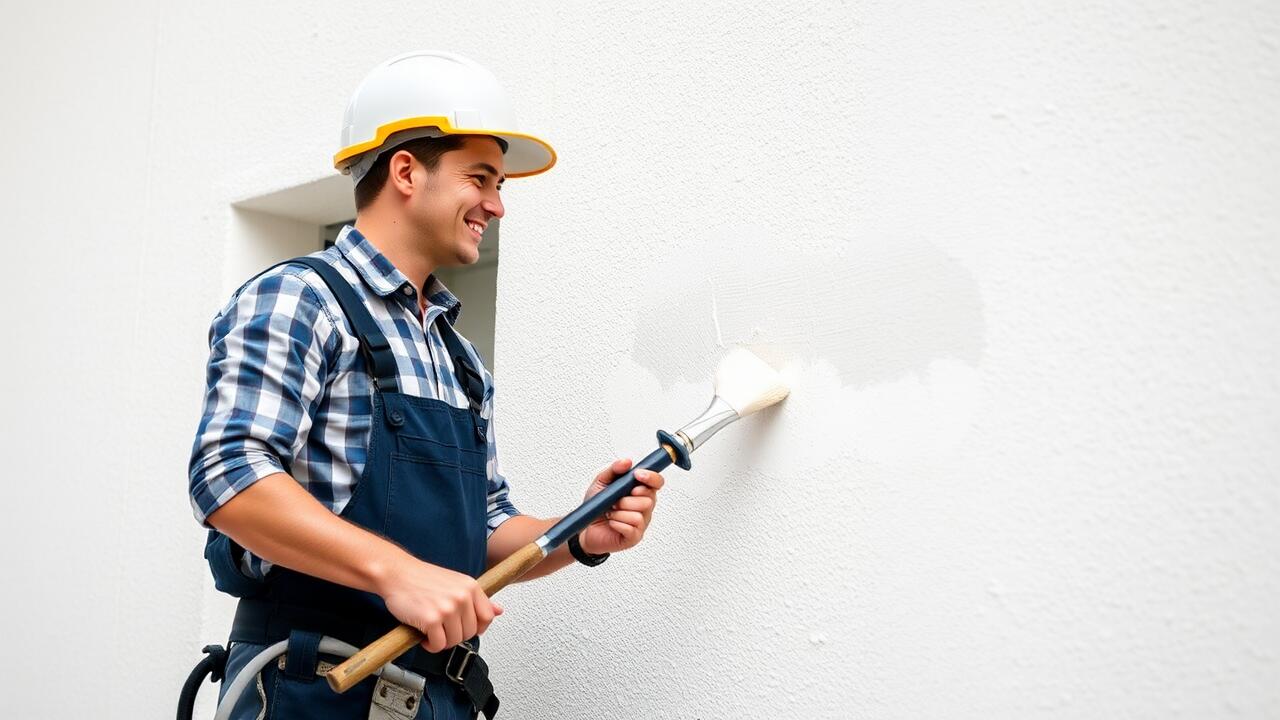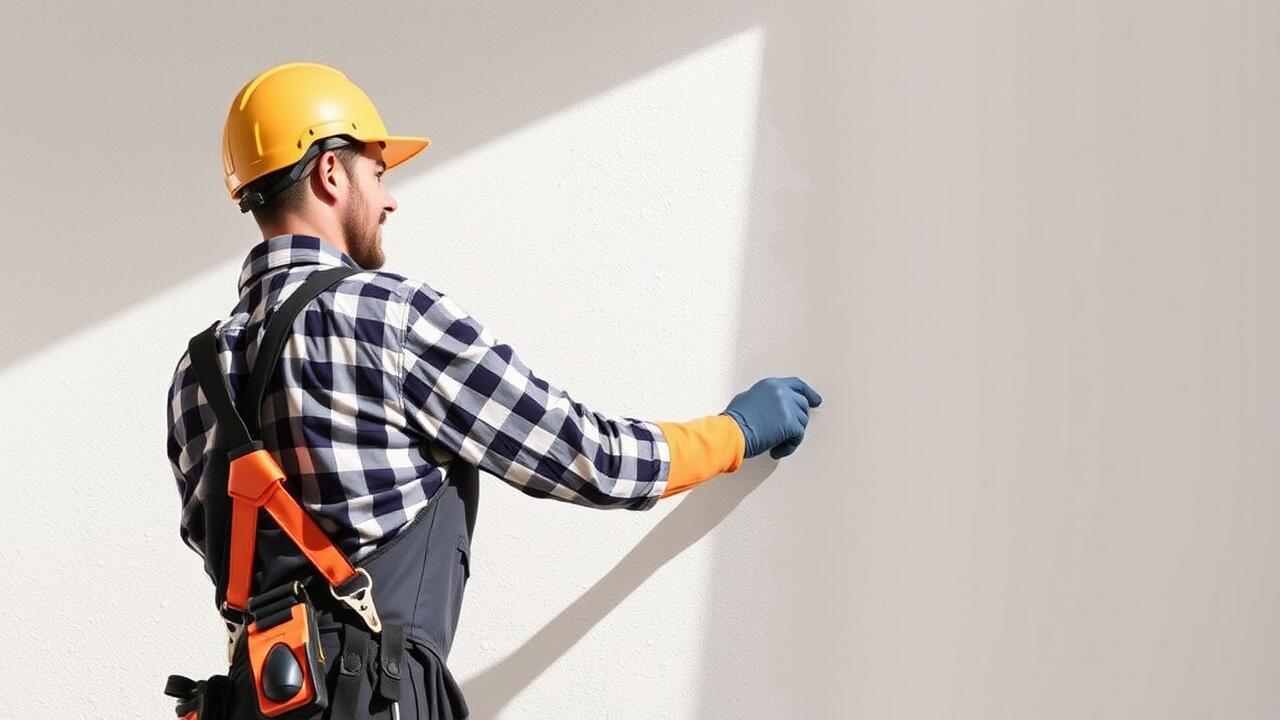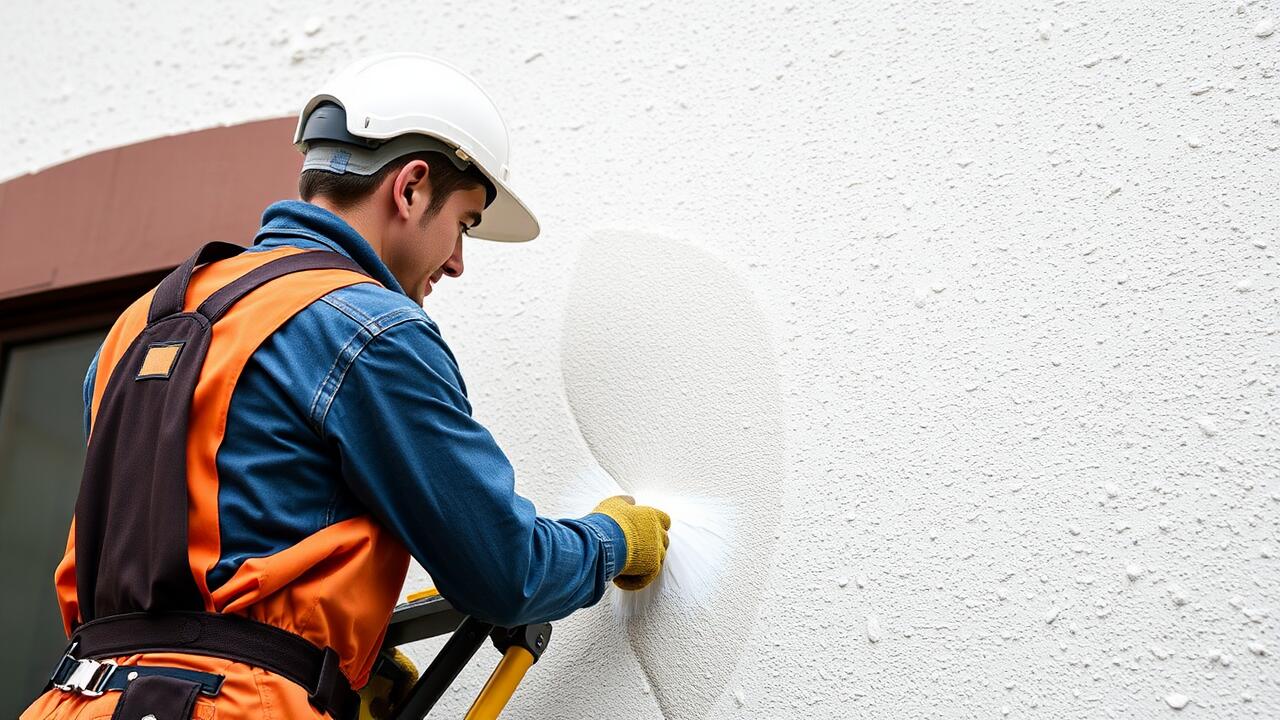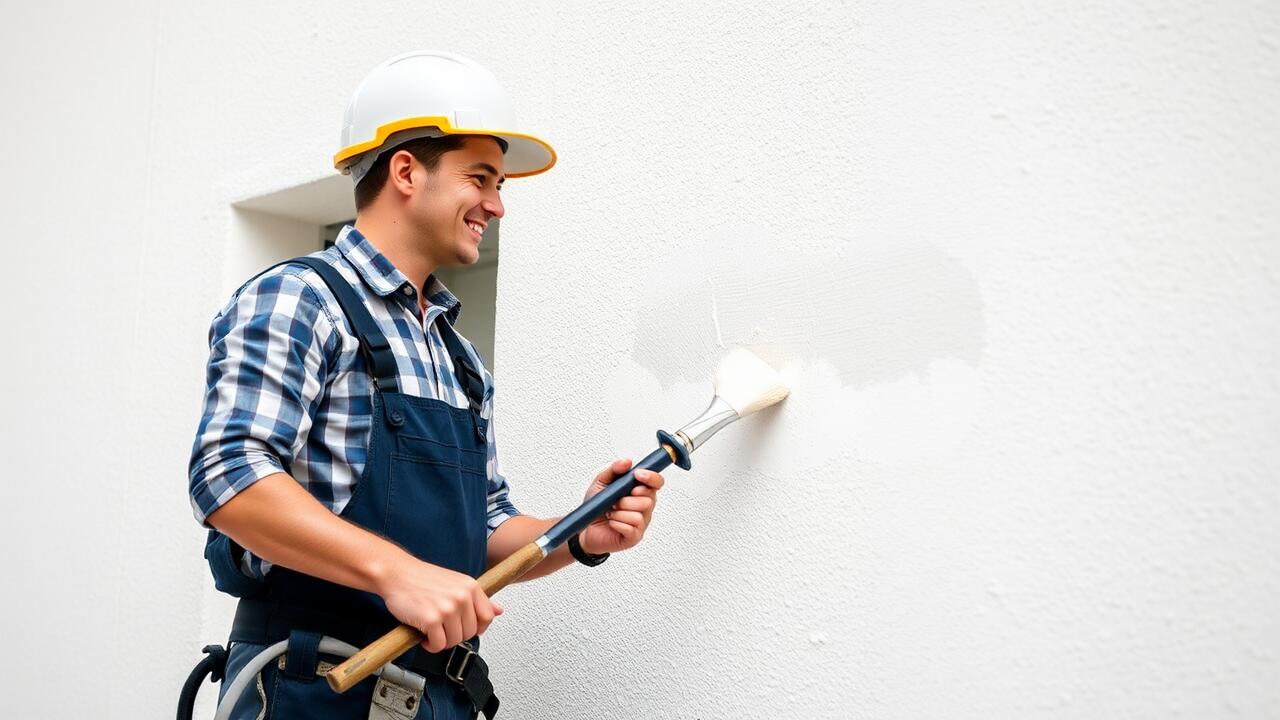
Proper Mixing of Stucco Paint
Proper mixing of stucco paint is essential for achieving a smooth and durable finish. Begin by gathering all necessary materials, including a mixing container, paddle mixer, and measuring tools. Follow the manufacturer's instructions regarding the ratio of paint to water or any additives. It's crucial to mix thoroughly to eliminate clumps and ensure an even consistency throughout the mixture. A well-blended paint will adhere better to the stucco surface, providing long-lasting results.
When searching for "Stucco Painting near me," ensure that local professionals follow the recommended mixing guidelines. These experts often have access to specialized equipment that facilitates an even mixture. Additionally, they are trained to understand the properties of various stucco paint brands, allowing them to choose the best option for different applications. Proper mixing not only impacts the appearance but also influences the longevity of the stucco paint job.
Achieving the Ideal Consistency
Achieving the ideal consistency in stucco paint is crucial for ensuring a smooth application and lasting finish. The right mixture often resembles a thick pancake batter. Factors such as brand, texture, and specific additives can influence the desired thickness. Properly mixing the paint helps to avoid issues like separation or uneven coverage during application, leading to a professional-looking result.
For those looking to apply stucco paint, the quest for “Stucco Painting near me” can yield local professionals who are experienced in preparing and applying the paint correctly. These experts understand the nuances of blending materials to reach that perfect consistency, making them invaluable for achieving optimal results. Their knowledge can save time and effort while delivering a finish that stands up to environmental conditions.
Priming the Stucco Surface
Priming the stucco surface is a crucial step in the painting process. A high-quality primer helps increase paint adhesion, ensuring that the topcoat lasts longer and looks more vibrant. Choosing the right primer can also address any porosity issues inherent in stucco, creating a smoother finish. When searching for the best products, consider local suppliers or look for "Stucco Painting near me" to find professionals who can provide specific recommendations based on regional conditions.
Properly applying the primer involves a few essential techniques. Start by cleaning the stucco surface to remove any dirt, mold, or previous coatings that may affect adherence. Using a roller or a sprayer will ensure even coverage, particularly in textured areas. A well-primed surface can dramatically enhance the overall appearance of the finished project and prevent issues such as peeling or flaking that often result from improper preparation.
Importance of a Good Primer
Using a reliable primer is crucial when preparing a stucco surface for painting. A good primer creates a strong bond between the stucco and the paint, ensuring longer-lasting results. It also helps to seal any porous areas of the stucco, preventing moisture from seeping in and causing damage over time. This layer lays the foundation for an even finish, which enhances the overall aesthetic appeal of the surface.
For those searching for professional assistance, "Stucco Painting near me" can yield numerous options. A well-executed priming process can protect the paint from peeling or fading prematurely. In addition, it contributes to better adhesion of the topcoat, ultimately improving the durability of the finish. Investing time and effort into using a quality primer can make a significant difference in the final outcome of your stucco painting project.
Addressing Weather Conditions
Weather conditions play a significant role in the application of stucco paint. Ideal temperatures generally range between 50°F and 90°F, allowing the paint to adhere correctly and dry evenly. Painting during extreme heat can cause the paint to dry too quickly, leading to cracks. Conversely, applying paint in chilly or damp conditions may result in poor adhesion and prolonged drying times. It’s essential to monitor the forecast and schedule the work to avoid rain or high humidity, which can compromise the finish.
When considering options for "Stucco Painting near me," it’s beneficial to inquire about the painters' strategies for managing local weather conditions. Professionals with experience will recognize the signs of potential issues and will plan accordingly, ensuring that the project proceeds smoothly. They may also suggest waiting for favorable conditions to guarantee the paint adheres well and delivers a lasting finish. Taking the weather into account helps in achieving a professional-grade appearance that withstands time and elements.
Best Times to Paint Stucco
Choosing the right time to paint stucco is crucial for achieving lasting results. Ideal weather conditions include mild temperatures, typically between 50°F and 80°F. Humidity levels should also be moderate. Painting on overly hot or cold days can lead to poor adhesion and uneven drying. This affects the final appearance and durability of the paint. Therefore, it is essential to keep an eye on the local forecast prior to starting a stucco painting project.
Spring and early fall often present the best opportunities for stucco painting. During these seasons, the weather tends to be more stable, allowing for optimal curing of the paint. Avoid rainy days or times when precipitation is expected shortly after application. For those searching for professional services, “Stucco Painting near me” can yield trustworthy results that adhere to these guidelines, ensuring your stucco surfaces look their best for years to come.
FAQS
What is stucco paint and how is it different from regular paint?
Stucco paint is specifically formulated for use on stucco surfaces, designed to adhere well and accommodate the unique texture and porous nature of stucco. Unlike regular paint, it often contains additives that enhance durability and weather resistance.
How do I achieve the ideal consistency when mixing stucco paint?
To achieve the ideal consistency, mix the stucco paint according to the manufacturer's instructions, typically until you reach a smooth and creamy texture. Consider testing the paint on a small area to ensure it spreads evenly without being too thick or too runny.
Why is priming important before applying stucco paint?
Priming is crucial as it helps to seal the porous surface of the stucco, improves paint adhesion, and enhances the overall finish. A good primer can also help prevent moisture issues and discoloration over time.
What weather conditions should I consider when painting stucco?
It is best to paint stucco when temperatures are moderate, ideally between 50°F and 90°F. Avoid painting in extreme heat, cold, or during rainy or humid conditions, as these can affect the drying and curing process of the paint.
How can I determine the best times to paint stucco in my area?
To determine the best times to paint stucco, check local weather forecasts for moderate temperatures and dry conditions. Spring and fall are often ideal seasons for painting stucco, but always consider specific climate conditions in your region.
